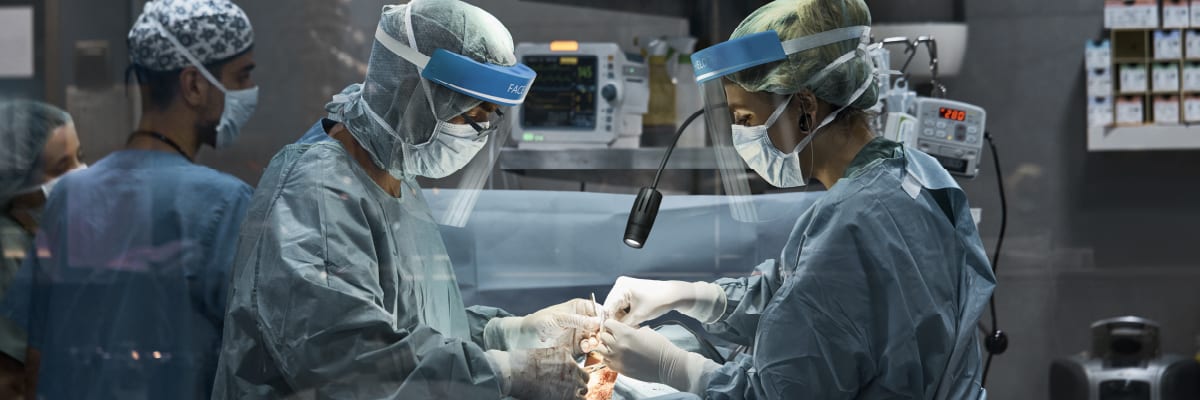How to Create a Great Silent Flex Arm

Share:
A silent flex arm might not be the first design feature that a client brings up, but when it’s needed AND you don’t have it? You almost can’t think of anything else. We have clients across several fields who require their flex arms to be silently adjustable. There can be numerous reasons for it (more on that in a second), but in the end, just one thing matters: you want your flex arm device to be seen and not heard.
This was an interesting challenge for us. Our process went through several phases until ending up at a design that was up to our standards — both as a silent flex arm and one that had the strength and durability that was needed for the job. While most of our arms already didn’t make noise — occasionally some of them did. Here’s how we worked together with our colleagues and clients to solve that problem and create a great silent flex arm.
Who uses a silent flex arm?
A silent flex arm is useful in a variety of industries, from music production to med tech. Anywhere with a really sensitive environment. You don’t want to distract, startle, or annoy a surgeon while they’re doing their job, right? It’s just not acceptable. Beyond that, it’s easy to see how this could be useful in performance venues, music studios, film production — any environment that needs absolute quiet. A squeaky flex arm isn’t just a distraction, it can affect how the end-user feels about the product. That ultimately will affect how often they use the device.

Even if you have an absolutely phenomenal flex arm in other aspects, if it squeaks at the wrong moment, they can feel like it represents a lower quality or low expectations by the design team. That’s getting off on the wrong foot, especially important when you want your users to feel encouraged – not discouraged – to use the flex arm devices.
Is lubricant an option for making a silent flex arm?
This was our first approach for a silent flex arm. Could a lubricant minimize the friction that might cause squeaks? It required massaging lubricant into the coils of the flex arms. While this DID make them silent, it compromised the strength of the flex arm that both we and our clients didn’t find acceptable. Even just a little lubricant sacrificed too much stiffness so we abandoned that idea in favor of a more material-based approach. This turned out to be the ideal solution, creating a silent flex arm that was able to achieve comparable strength and durability.
How do you create a silent flex arm?
A silent flex arm is created like any other flex arm: through attention to detail, hard work, and teamwork. For us, that meant finding an alternative construction that solved the problem. Without getting too into the weeds (or revealing any secrets), we were able to begin offering a brass-over-steel construction where the shaped wire which winds around the spring wire is brass instead of steel. This construction is slightly more expensive, but absolutely quiet.
Using two different materials prevented the odd squeak or noise during adjustments that sometimes happened with our standard steel-over-steel flex arms. While we continue to offer both constructions, the brass wire option turned out to be the solution that opened the doors to the possibility of a silent flex arm. It gave us more opportunities in fields where silence is an absolute must-have, like medical technology.

Is a silent flex arm as durable and strong as a non-silent one?
It’s hard to generalize strength and durability when talking about a flex arm. We test our brass-over-steel flex arms for specific strength applications and in those tests, we’ve found that the strength of brass-over-steel is comparable to steel-over-steel. If something like high cycling is anticipated, it might require an initially slightly stronger arm to compensate for some slight strength loss over time that brass can experience. That’s why we recommend consulting with our team before making those decisions. That allows for us to answer any questions specifically related to YOUR flex arm — not flex arms in general.
Is designing a silent flex arm for med-tech devices complicated?
Absolutely! Understanding that problem-solving in this field often requires sophisticated and complex answers is something we don’t take for granted. We’ve met so many people in the medical community working toward really innovative and interesting products, which is why we enjoy working with them. It behooves us to take the same approach in our process. It takes experimentation and a willingness to go above and beyond normal expectations to create something like a silent flex arm device. We are excited to meet any challenge that allows us to grow in those ways.
_____________________
Working on a flex arm design? We are here for a no-pressure phone call. We’d love to hear more about what you are working on and give you ideas and prototypes to improve your decision-making process. Give us a call, we promise it will be worth your while.
